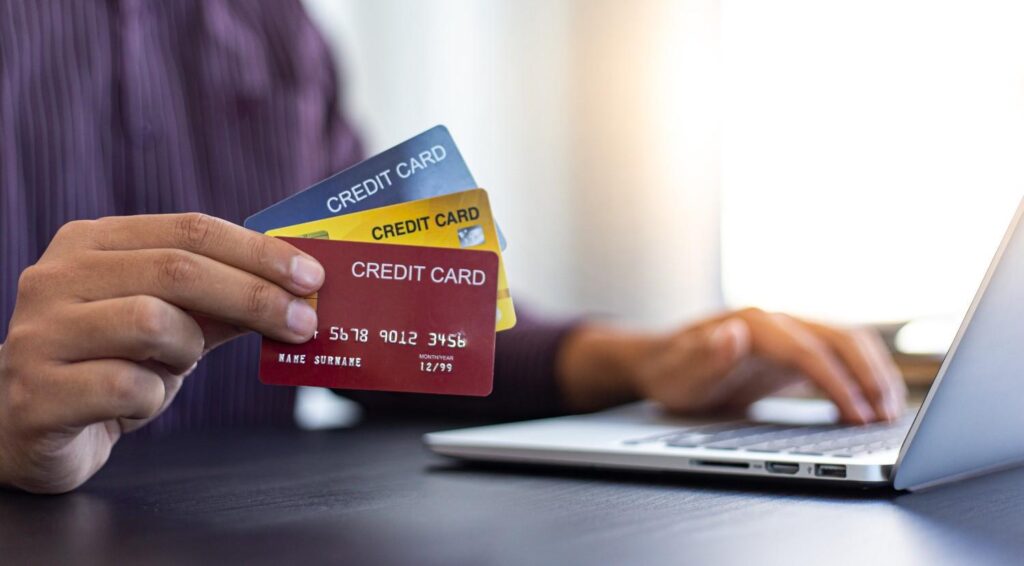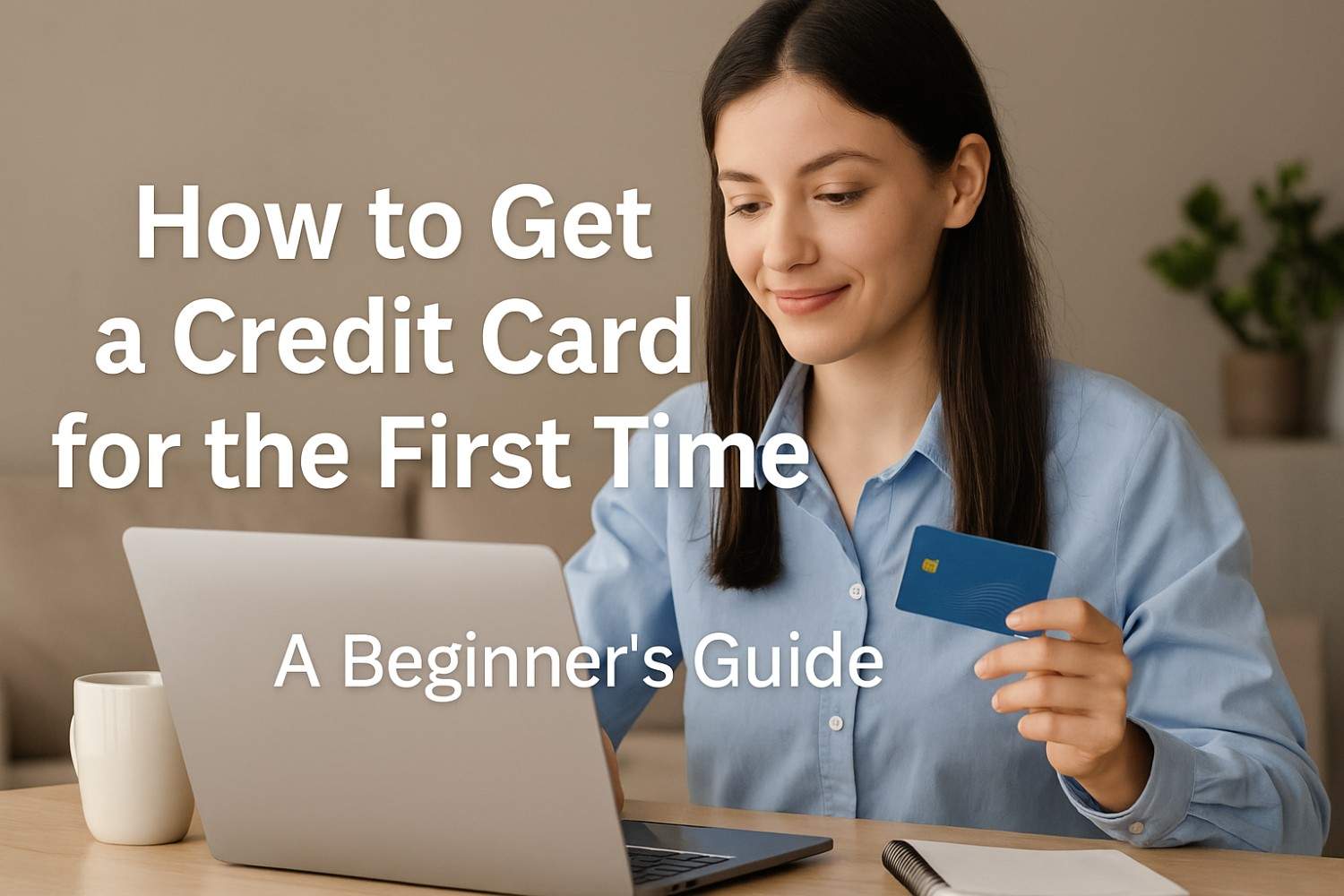Getting your first credit card can feel a little intimidating—I remember feeling the same way when I applied for mine. I kept asking myself, “Am I ready for this?” and “What if I mess up my credit score before I even start?” If you’re wondering how to get a credit card for the first time, don’t worry. I’ve been there, and I’ll walk you through every step to make sure your first experience builds your financial confidence, not debt.
What Exactly Is a Credit Card, and Why Does It Matter?
A credit card lets you borrow money from a bank to make purchases, as long as you repay it later. Unlike a debit card, which uses money from your account, a credit card helps you build a credit history—something lenders use to determine if you’re responsible with money.
When you manage your card wisely—by paying bills on time and keeping balances low—you create a strong credit score that can help you qualify for future loans, apartments, or even better job opportunities.
How to Get a Credit Card for the First Time (Step-by-Step)
Learning how to get a credit card for the first time comes down to preparation, responsible planning, and choosing the right product. Here’s a clear roadmap to follow.

1. Check Your Eligibility and Credit Standing
Before you jump in, make sure you meet basic requirements. Most card issuers expect applicants to be 18 or older with a stable income source. If you’re under 21, you might need to show proof of independent income or have a co-signer.
If you don’t yet have a credit history, don’t panic. Banks often assess your job stability, existing savings or salary account, and relationship with them. Checking your credit report is a smart first step—it’s free and helps you understand your financial starting point.
2. Explore Options Designed for Beginners
Not every credit card is created equal, and some are tailored specifically for first-time users.
Here’s what you can consider:
- Secured Credit Cards: These cards require a refundable deposit that acts as your credit limit. They’re ideal for people with no credit history. With consistent on-time payments, you can often upgrade to an unsecured card later.
- Student Credit Cards: Designed for college students, these typically have lower income requirements and may allow a co-signer.
- Authorized User Option: If you’re not ready to apply on your own, you can become an authorized user on a parent’s or family member’s account. Their good payment behavior can help build your credit profile.
- Existing Bank Cards: Applying through the bank where you already maintain a savings or salary account can improve approval odds because they’re familiar with your financial habits.
3. Choose the Right Card for Your Lifestyle
When comparing cards, focus on annual fees, interest rates, and benefits that match your spending habits. Some beginner cards come with no annual fees and offer simple cashback or reward points.
If you’re starting out, choose reliability over flashy perks. Aim for a card that reports to all three credit bureaus—Experian, Equifax, and TransUnion—so your good credit behavior is recorded everywhere.
4. Gather the Required Documents
Having the right paperwork ready can make your application smoother. Typically, you’ll need:
- Proof of identity (driver’s license or passport)
- Proof of address (utility bill or rental agreement)
- Proof of income (recent pay stubs or tax returns)
- Social Security Number
These documents help verify your eligibility and ensure faster approval.
5. Apply Online or at Your Bank
Once you’ve selected your card, submit your application online or through your bank branch. Many issuers like Capital One, Chase, and Discover allow pre-qualification checks—these give you an idea of approval chances without affecting your credit score.
If you apply in person, the banker can walk you through every detail and confirm what’s needed. Always double-check your details before submission to avoid delays.
6. Activate Your New Credit Card
After approval, your credit card will arrive by mail within a week or two. Follow the activation instructions—usually by phone, app, or online portal—and set a secure PIN for transactions. Once activated, make a small purchase to start building your credit history.
7. Practice Smart Credit Habits from Day One
Congratulations—you’ve got your first card! Now comes the most important part: using it wisely.
Key habits for new cardholders:
- Pay in full and on time. Late payments damage your score and add interest.
- Keep utilization low. Try not to use more than 30% of your available limit.
- Avoid cash withdrawals. They often trigger immediate interest and fees.
- Monitor statements monthly. Review charges to catch errors or fraud early.
Following these steps helps you establish credit fast while avoiding debt traps.
What to Avoid as a First-Time Credit Card User
Even experienced users make mistakes—so learn from them early:
- Don’t apply for too many cards at once. Each “hard inquiry” lowers your score.
- Avoid paying only the minimum balance—it leads to long-term debt.
- Always read your card’s fine print. Understand fees, interest rates, and grace periods.

Treat your card as a financial tool, not free money. Discipline today equals financial freedom tomorrow.
Frequently Asked Questions
1. Can I get a credit card with no credit history?
Yes, you can. Secured or student credit cards are great starter options. A refundable deposit or a co-signer can help you qualify while you build credit.
2. How long does it take to get approved?
Online applications usually provide instant decisions. If manual review is needed, it may take up to 10 business days. Once approved, expect your card in the mail within a week.
3. Does applying for a credit card hurt my credit?
A single inquiry might slightly lower your score, but it’s temporary. Responsible use quickly outweighs the minor dip and helps your credit grow stronger.
4. Should I start with one card or multiple?
Start with just one. Managing multiple cards early on can complicate payments and increase your debt risk. Once you build a solid track record, you can explore more options.
Smart Money Moves Start Here
Learning how to get a credit card for the first time isn’t just about submitting an application—it’s about starting your financial journey on the right foot. By choosing a beginner-friendly card, applying strategically, and maintaining responsible habits, you can turn your first card into a credit-building powerhouse.
The key is consistency: pay on time, stay within your limits, and track your expenses. Over time, your good habits will unlock better cards, lower interest rates, and a higher credit score. Remember, your first credit card isn’t just a piece of plastic—it’s your gateway to financial growth.









